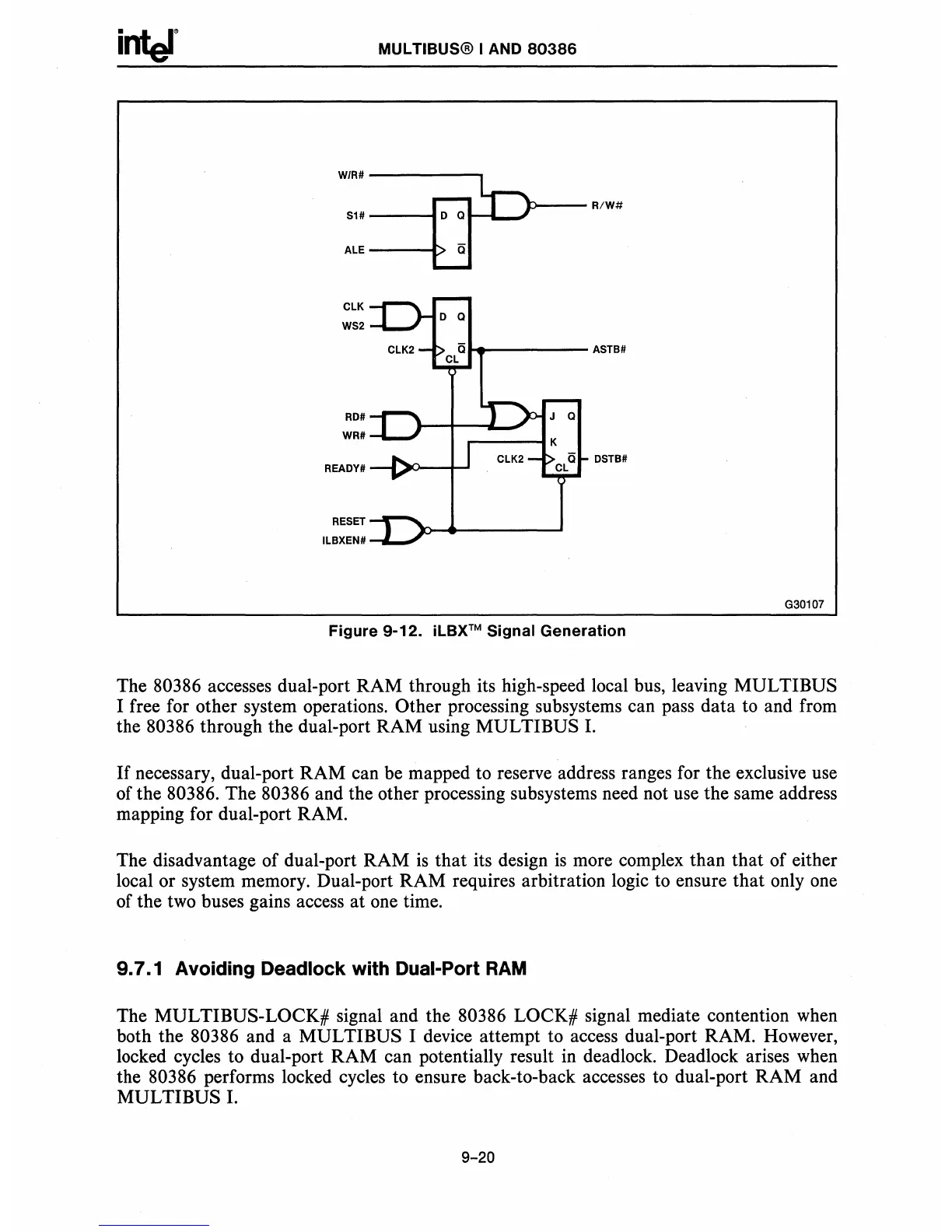MUL TIBUS® I AND
80386
W/R#
-------,
:~:---~';w.
elK
WS2
RD#
WRH
....
-----
ASTBH
DSTBH
READY#
-~o---t-'
RESET
IlBXEN#
Figure
9-12. iLBX™ Signal
Generation
G30107
The 80386 accesses dual-port RAM through its high-speed local bus, leaving MUL TIBUS
I free for other system operations. Other processing subsystems can pass data to and from
the
80386 through the dual-port RAM using
MUL
TIBUS
I.
If
necessary, dual-port RAM can be mapped to reserve address ranges for the exclusive use
of the
80386. The 80386 and the other processing subsystems need not use the same address
mapping for dual-port RAM.
The disadvantage of dual-port RAM
is
that its design
is
more complex than that of either
local or system memory. Dual-port RAM requires arbitration logic to ensure that only one
of the two buses gains access
at
one time.
9.7.1 Avoiding Deadlock with Dual-Port
RAM
The MULTIBUS-LOCK# signal and the 80386 LOCK# signal mediate contention when
both the
80386 and a MULTI BUS I device attempt to access dual-port RAM. However,
locked cycles to dual-port RAM can potentially result
in
deadlock. Deadlock arises when
the
80386 performs locked cycles to ensure back-to-back accesses to dual-port RAM and
MULTIBUS
I.
9-20

